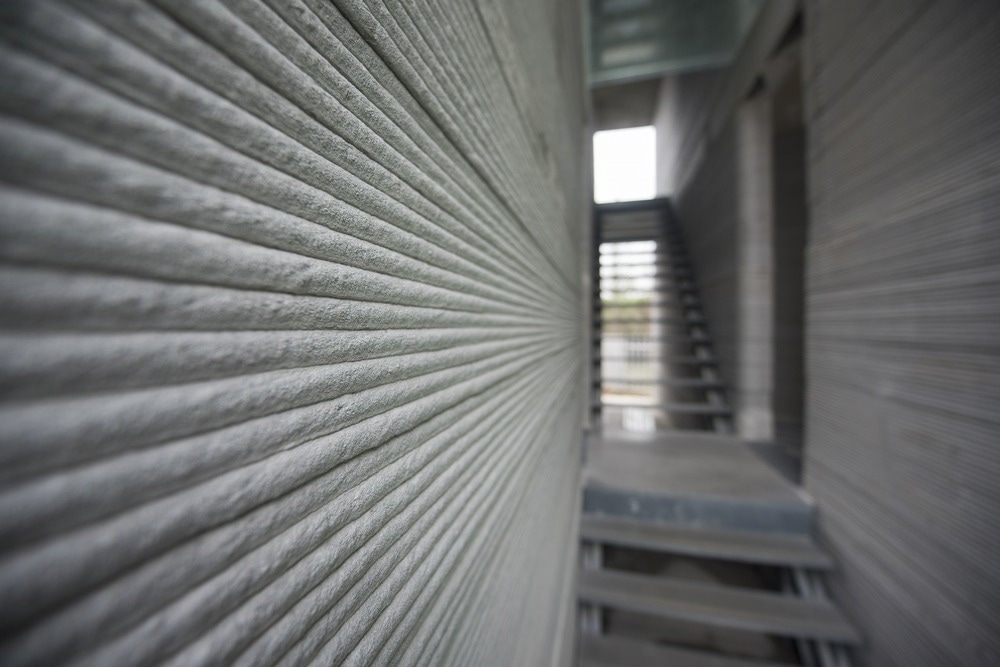Writing in Energy & Buildings, a team of scientists from the University of Tehran in Iran has investigated the thermal performance of 3D printed buildings.

Study: Investigation of thermal performance and life-cycle assessment of a 3D printed building. Image Credit: Matjazz/Shutterstock.com
3D Printing in the Construction Industry
With the burgeoning world population, there is an urgent need for quality architecture and infrastructure that is fit for purpose. In 2016, the construction industry accounted for approximately 9% of the EU’s total GDP.
Whilst the construction sector is vital for the global economy, there are several critical problems that engineers and scientists are attempting to address. The industry has issues with cost, low construction speed, high energy and resource consumption, environmental damage, emissions, and outdated technologies.
According to some estimates, in the EU alone the construction of buildings accounts for 36% of total carbon emissions and 40% of energy demands. To address key environmental, economic, and societal concerns, there has been intense focus on improving the sustainability of the construction industry.
3D printing, otherwise known as additive manufacturing, has become a focus of research in multiple industries due to benefits such as design freedom and the reduction of resource needs, energy demands, and waste generation. 3D printing is a growing element of the construction industry’s evolution in the 21st century.
3D printing technologies involve the layer-by-layer deposition of materials based on a model constructed using advanced CAD/CAM software. Material extrusion is a widely used method in 3D printing which has been explored by the construction industry. Indeed, many projects have already been completed or broken ground utilizing 3D printing technology to construct commercial and residential buildings.
3D printing brings advantages to the construction industry in terms of energy and resource savings, cost-effectiveness, and the ability to construct projects in a fraction of the time and labor needs that traditional building projects require. Additives are commonly used in mortars to enhance their material properties and ensure that 3D-printed buildings meet stringent regulations.
Thermal Performance of Buildings
Thermal performance is a critical parameter in building design. Cooling and heating loads play a key role in fuel consumption and carbon dioxide emissions during a building’s lifetime and reducing them is essential for improving energy efficiency and mitigating the carbon footprint of construction.
Research has focused in recent years on phase change materials and thermal insulation to promote sustainable development. These materials can reduce heat loss through external walls and roofs, leading to less energy consumption and lifetime costs.
3D printing possesses benefits for improving the thermal performance of buildings due to material design freedom. For example, building materials with complex internal geometries such as lattice and cellular structures possess enhanced acoustic and thermal performance as well as being light and strong enough to meet structural demands whilst saving cost and materials.
Several studies have evaluated the thermal performance of 3D printed building materials, with favorable results. Life cycle assessments have been employed by researchers to elucidate the long-term performance of these advanced materials. Yao et al., for instance, have evaluated the performance of 3D-printed mortars, concluding that, with process improvements, this material can reduce the environmental impact of projects utilizing it.
The Study
The new paper in Energy & Buildings has provided an environmental and technological assessment of a 3D printed building. The building studied incorporates phase change materials and thermal insulation to improve its thermal performance.
Two different mortars were assessed in Design Builder software to evaluate their thermal performance in simulated building applications. These materials were magnesium oxide cement and calcium sulfoaluminate cement, which are already employed as slurries for 3D printing.
Sima-pro software was used to provide a material life-cycle assessment. Results were compared with ordinary Portland Cement, which is the most used construction material, to provide a comparative environmental impact analysis.
Study Conclusions
Four scenarios were considered in the study. The optimal scenario was found to be magnesium oxide cement incorporating phase change materials and thermal insulation. Phase change materials have minimal effects on reducing energy consumption, however, whereas thermal insulation reduces energy consumption by approximately 5%, which led the authors to recommend magnesium oxide cement with thermal insulation as the preferred scenario.
Life-cycle assessments demonstrated that Portland cement has the highest environmental impact. The presence of magnesium in magnesium oxide cement has issues with toxicity, however, being twice that of Portland cement and calcium sulfoaluminate cement.
Overall, the study has concluded that employing 3D printing technologies and printable concrete in construction helps to vastly reduce energy consumption and, consequently, the environmental impact of new buildings. Whilst material challenges still exist, for instance with toxicity and natural resource impact of magnesium concretes, this approach is potentially hugely beneficial for the construction sector.
More from AZoM: ICP-MS for Trace Metal Analysis
Further Reading
Ebrahimi, M., et al. (2022) Investigation of thermal performance and life-cycle assessment of a 3D printed building Energy & Buildings 112341 [online, pre-proof] sciencedirect.com. Available at: https://www.sciencedirect.com/science/article/abs/pii/S0378778822005126
Disclaimer: The views expressed here are those of the author expressed in their private capacity and do not necessarily represent the views of AZoM.com Limited T/A AZoNetwork the owner and operator of this website. This disclaimer forms part of the Terms and conditions of use of this website.